
How to Use 9v battery: Examples, Pinouts, and Specs
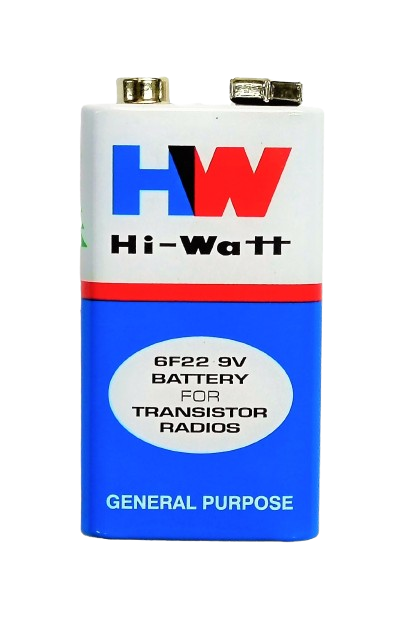
 Design with 9v battery in Cirkit Designer
Design with 9v battery in Cirkit Designer9-Volt Battery Documentation
1. Introduction
The 9-volt battery is a compact and versatile power source commonly used in small electronic devices. It provides a nominal voltage of 9 volts and is widely recognized for its rectangular shape with a pair of snap connectors on the top. This battery is a staple in many applications due to its reliability, portability, and ease of use.
Common Applications:
- Smoke detectors
- Remote controls
- Portable radios
- Multimeters
- Arduino and other microcontroller projects
- Toys and small gadgets
The 9-volt battery is an essential component for hobbyists, engineers, and everyday users, offering a convenient power solution for low-power devices.
2. Technical Specifications
Below are the key technical details and pin configuration of a standard 9-volt battery:
Key Technical Details
| Parameter | Value |
|---|---|
| Nominal Voltage | 9V |
| Chemistry | Alkaline, Lithium, or Zinc-Carbon |
| Capacity | 400–600 mAh (Alkaline) |
| Dimensions | 48.5 mm × 26.5 mm × 17.5 mm |
| Weight | ~45 g (Alkaline) |
| Operating Temperature | -20°C to 55°C |
| Shelf Life | 3–5 years (Alkaline) |
Pin Configuration
The 9-volt battery has two terminals located on the top of the battery:
| Terminal | Description |
|---|---|
| Positive (+) | Supplies the positive voltage (9V) |
| Negative (-) | Ground or return path |
The terminals are designed for snap connectors, making it easy to connect the battery to a circuit or device.
3. Usage Instructions
How to Use the 9-Volt Battery in a Circuit
- Identify the Terminals: Locate the positive (+) and negative (-) terminals on the battery.
- Connect to a Battery Snap Connector: Use a 9-volt battery snap connector to securely attach the battery to your circuit. The red wire corresponds to the positive terminal, and the black wire corresponds to the negative terminal.
- Integrate into the Circuit: Connect the red wire to the positive voltage rail of your circuit and the black wire to the ground rail.
- Check Polarity: Ensure the polarity is correct before powering the circuit to avoid damage to components.
Important Considerations and Best Practices
- Voltage Regulation: If your circuit requires a voltage lower than 9V, use a voltage regulator (e.g., LM7805 for 5V output).
- Current Draw: Ensure the total current draw of your circuit does not exceed the battery's capacity to avoid rapid depletion.
- Battery Life: Disconnect the battery when not in use to conserve energy.
- Avoid Short Circuits: Never short the terminals of the battery, as this can cause overheating or damage.
- Disposal: Dispose of used batteries responsibly, following local recycling guidelines.
4. Example: Using a 9-Volt Battery with an Arduino UNO
The 9-volt battery can be used to power an Arduino UNO via its Vin pin. Below is an example of how to connect the battery and a simple Arduino sketch to blink an LED.
Circuit Diagram
- Connect the red wire of the battery snap connector to the Vin pin of the Arduino.
- Connect the black wire of the battery snap connector to the GND pin of the Arduino.
- Connect an LED to pin 13 of the Arduino with a 220-ohm resistor in series.
Arduino Code
// Simple LED Blink Example
// This code blinks an LED connected to pin 13 of the Arduino UNO.
// Ensure the 9V battery is connected to the Arduino's Vin and GND pins.
void setup() {
pinMode(13, OUTPUT); // Set pin 13 as an output pin
}
void loop() {
digitalWrite(13, HIGH); // Turn the LED on
delay(1000); // Wait for 1 second
digitalWrite(13, LOW); // Turn the LED off
delay(1000); // Wait for 1 second
}
5. Troubleshooting and FAQs
Common Issues and Solutions
| Issue | Possible Cause | Solution |
|---|---|---|
| Device does not power on | Battery is depleted | Replace the battery with a new one. |
| Circuit not functioning properly | Incorrect polarity connection | Verify and correct the polarity. |
| Battery heats up during use | Excessive current draw or short circuit | Check for short circuits or reduce load. |
| Arduino resets intermittently | Insufficient current from the battery | Use a fresh battery or a higher-capacity power source. |
FAQs
Q1: Can I recharge a 9-volt battery?
A1: Only rechargeable 9-volt batteries (e.g., NiMH or Li-ion) can be recharged. Standard alkaline or zinc-carbon batteries are not rechargeable.
Q2: How long does a 9-volt battery last?
A2: Battery life depends on the device's current draw. For example, a 500 mAh alkaline battery powering a 10 mA device can last approximately 50 hours.
Q3: Can I use a 9-volt battery to power a 5V device?
A3: Yes, but you must use a voltage regulator (e.g., LM7805) to step down the voltage to 5V.
Q4: Is it safe to leave a 9-volt battery connected to a circuit?
A4: It is safe as long as the circuit is designed to handle the battery's voltage and current. However, disconnect the battery when not in use to prevent unnecessary drain.
This documentation provides a comprehensive guide to understanding, using, and troubleshooting a 9-volt battery. Whether you're a beginner or an experienced user, the 9-volt battery remains a reliable and essential power source for countless applications.
Explore Projects Built with 9v battery
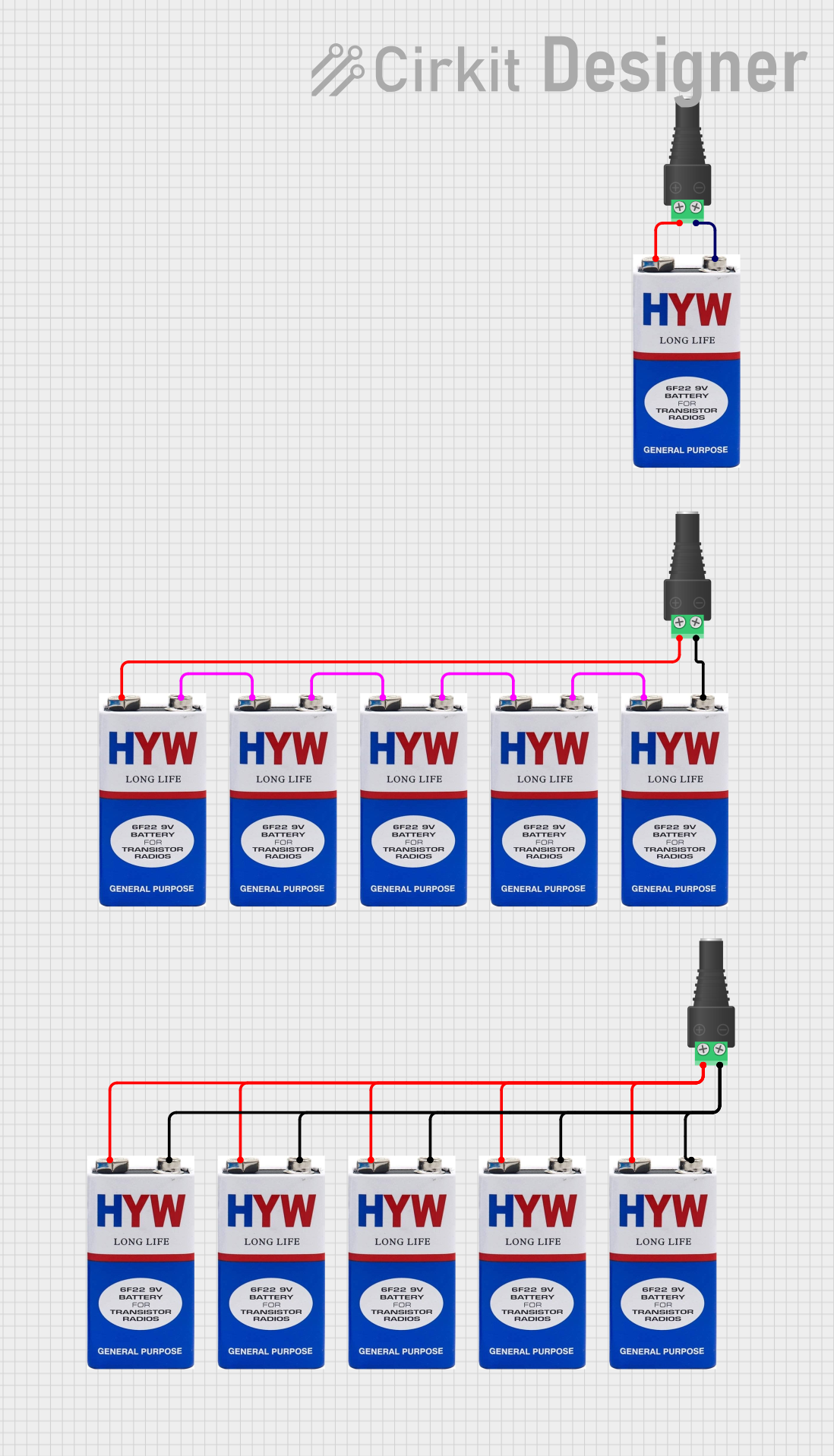
 Open Project in Cirkit Designer
Open Project in Cirkit Designer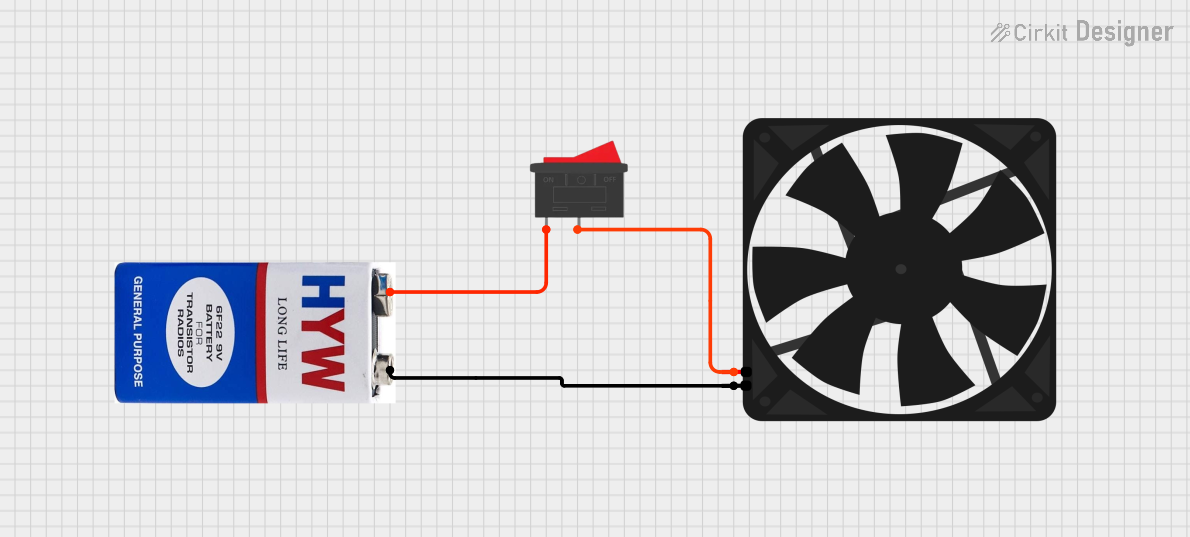
 Open Project in Cirkit Designer
Open Project in Cirkit Designer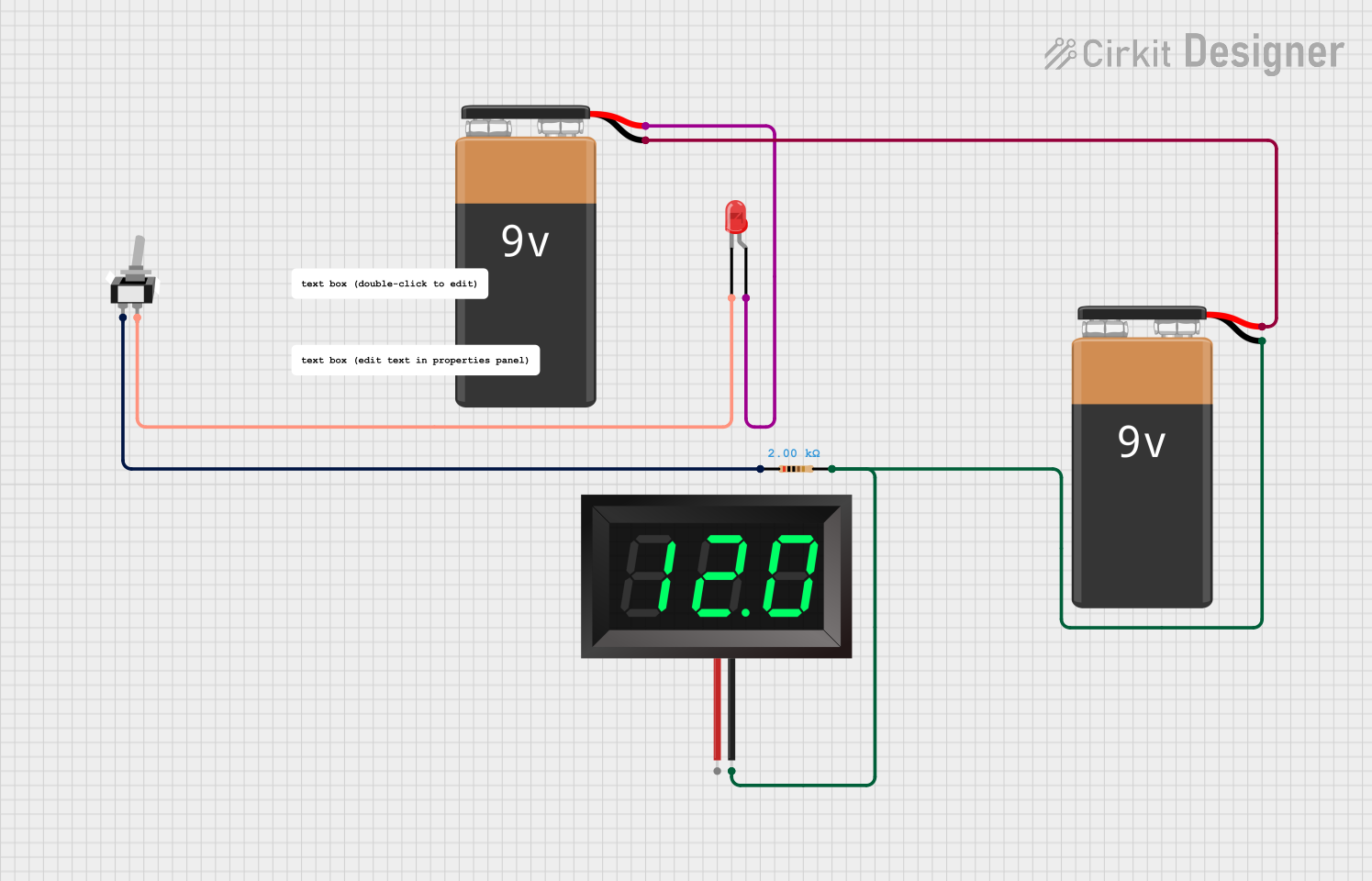
 Open Project in Cirkit Designer
Open Project in Cirkit Designer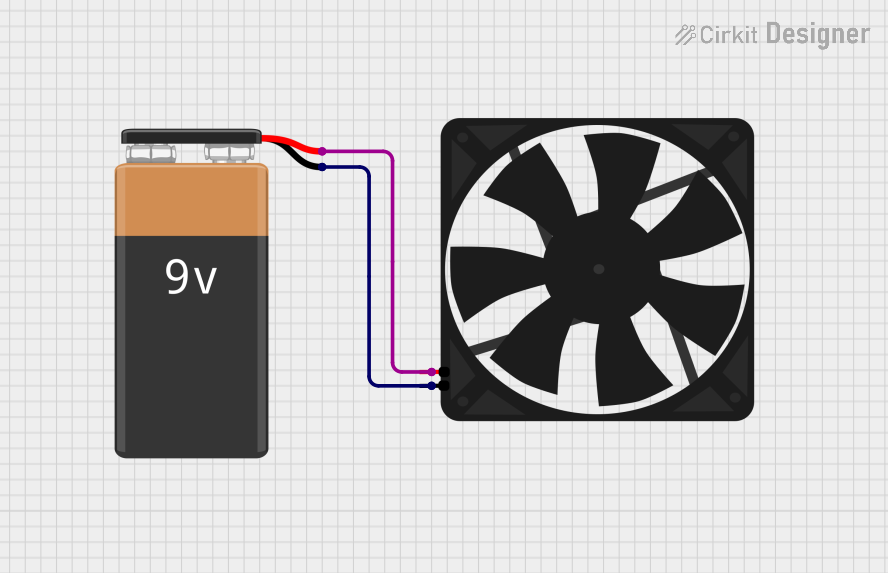
 Open Project in Cirkit Designer
Open Project in Cirkit DesignerExplore Projects Built with 9v battery

 Open Project in Cirkit Designer
Open Project in Cirkit Designer
 Open Project in Cirkit Designer
Open Project in Cirkit Designer
 Open Project in Cirkit Designer
Open Project in Cirkit Designer
 Open Project in Cirkit Designer
Open Project in Cirkit Designer